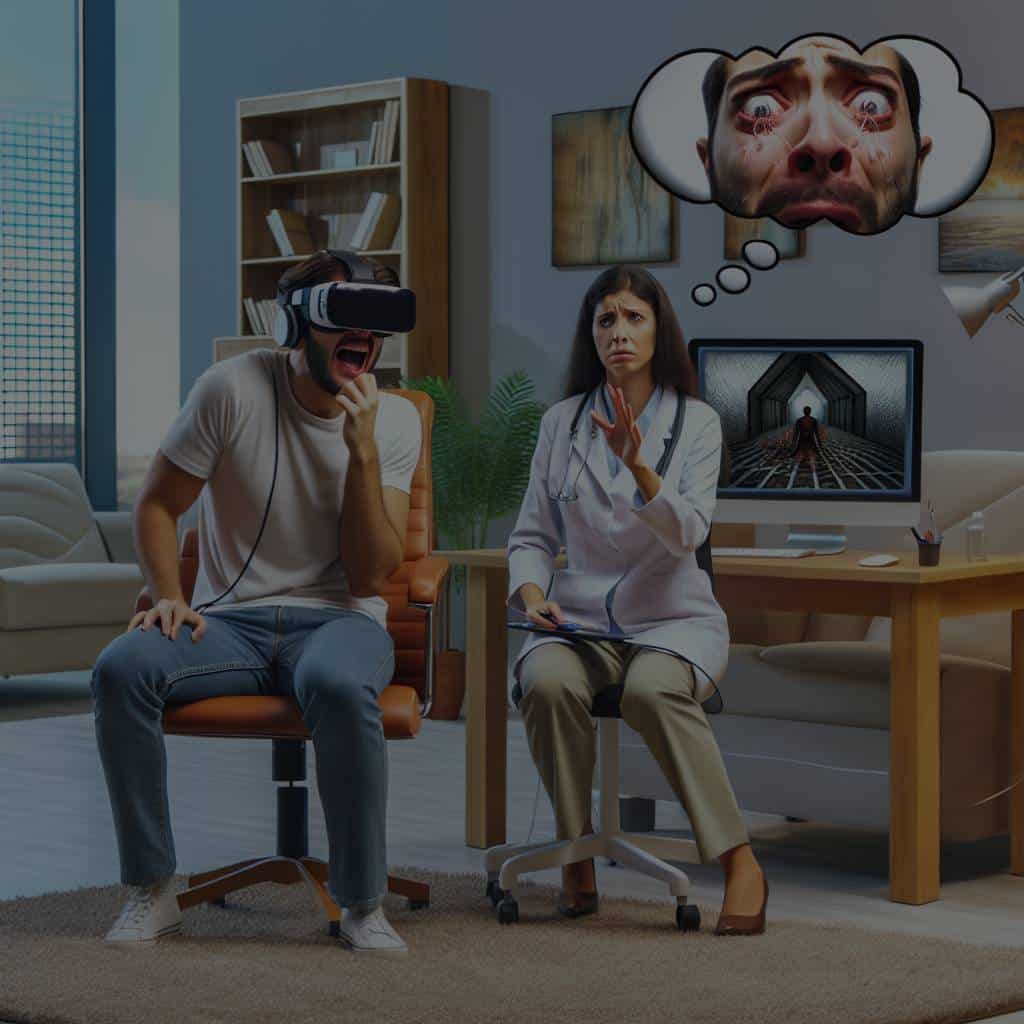Can Virtual Reality Exposure Therapy Treat Phobias More Effectively?

Phobias, or irrational fears, can sometimes take a stronghold in our lives, limiting our potential and causing undue anxiety. Traditional treatments have been employed to help individuals overcome their fears. But with the advent of technology, an innovative approach known as Virtual Reality Exposure Therapy (VRET) is being explored as a possible treatment for phobias. This therapy immerses the individual in a simulation of their fear, offering a new route to conquer phobias. But the question remains: can Virtual Reality Exposure Therapy treat phobias more effectively?
Understanding the Role of Virtual Reality Exposure Therapy
Virtual Reality Exposure Therapy (VRET) is a relatively new therapeutic approach that uses virtual reality technology to help individuals confront and manage their fears. This form of therapy creates a safe environment for the individual, allowing them to face their phobias without any real-world risks.
Also to read : Discover the hidden treasures in the gods mystery box
Google and other tech giants are investing heavily in virtual reality technologies, making it more accessible for therapeutic use. However, the efficacy of VRET remains a subject of study and review. So, let’s delve into the role of VRET in treating phobias.
Clinical Studies on the Efficacy of VRET
Several studies have been conducted to evaluate the effectiveness of VRET in treating phobias. One such study, published on PubMed, found that VRET was successful in reducing fear and anxiety levels in patients suffering from specific phobias. According to the research, VRET provided a controlled environment where patients could confront their fears directly, promoting desensitization and resilience.
Also to see : Unlock the power of engaging tiktok video templates
Another study, indexed by Crossref, found that VRET was especially beneficial for individuals suffering from claustrophobia. These individuals saw a significant reduction in their fear and anxiety levels after undergoing VRET. The DOI (Digital Object Identifier) of this research is widely available for reference.
However, it’s essential to bear in mind that while these studies indicate promising results, more extensive research is needed to validate the widespread effectiveness of VRET in treating a range of phobias.
Comparing VRET with Traditional Exposure Therapy
Traditional exposure therapy involves gradually exposing an individual to the object or situation they fear, in a safe and controlled environment. The goal is to reduce fear and anxiety through repeated exposure, eventually helping the patient overcome their phobia.
With VRET, the same principle of exposure applies, but the exposure occurs within a virtual environment. This approach can potentially offer several advantages. For one, it provides an environment that can be easily manipulated and controlled. Additionally, some patients may find it easier to confront their fears in a virtual setting before facing them in real life.
However, the efficacy of VRET compared to traditional exposure therapy is still under review. The Behav Study, a comprehensive research piece on behavioral therapies, indicates that both methods have their merits and can effectively treat phobias. Yet, the choice between VRET and traditional exposure therapy should be made considering the individual’s comfort, the nature of their phobia, and the availability of resources.
The Future of VRET and Its Implications
The future of VRET appears promising. With advancements in technology and an increasing body of research supporting its efficacy, it is likely that VRET will become a standard tool in treating phobias. However, it is crucial to note that as with any therapy, the success of VRET ultimately depends on the individual’s commitment and the skill of the therapist.
VRET holds particular promise for people who have previously been unable to undergo traditional exposure therapy, either due to the impracticality of real-life exposure or their level of fear being too high. In such cases, virtual reality provides a practical alternative, enabling gradual exposure in a controlled, safe environment.
However, while the potential of VRET is vast, it is not a one-size-fits-all solution. It is merely a tool, and like all tools, its effectiveness depends on how it’s used. It is not a magic cure but a supplement to a holistic treatment plan for phobias.
While the future of VRET is indeed bright, it is clear that more research and development is required before it can be universally adopted.
The Role of VRET in Addressing Specific Phobias
Undoubtedly, Virtual Reality Exposure Therapy (VRET) demonstrates potential in treating various specific phobias. A specific phobia refers to an intense, irrational fear of a particular object or situation. This could range from fear of flying, heights, or even animals, among others.
Google Scholar provides access to a multitude of studies that delve into the application of VRET in addressing these specific phobias. A meta-analysis, for instance, pulled from a range of scientific literature shows that VRET is effective in minimizing the fear associated with specific phobias, thereby improving the mental health of sufferers.
A notable study available on PubMed abstract showed that individuals with a fear of flying experienced substantially reduced anxiety after undergoing VRET. The virtual environment used in the therapy effectively simulated the experience of flying, enabling the patients to confront their fears in a safe, controlled setting.
Simultaneously, another Crossref full text study indicated that individuals dealing with arachnophobia, or fear of spiders, reported a decrease in anxiety after VRET sessions. In this case, the virtual reality exposure allowed them to interact with virtual spiders, gradually minimizing their fear.
Despite these promising outcomes, it’s crucial to remember that further research is still required to determine the full range of specific phobias VRET can effectively address.
Conclusion: VRET as a Supplement, Not a Substitute
In conclusion, it is evident that Virtual Reality Exposure Therapy (VRET) shows significant potential in treating a variety of phobias. From the available evidence on Google Scholar, Crossref full text, and PubMed abstract, there is a clear indication that VRET can help individuals overcome specific phobias in a controlled, safe virtual environment.
However, the efficacy of this relatively new form of exposure therapy compared to traditional in-vivo exposure remains a topic of ongoing research. As highlighted in the Cyberpsychol Behav study, the choice between VRET and traditional exposure therapy should consider the individual’s comfort, the nature of the specific phobia, and the availability of resources.
Yet, VRET should not be viewed as a standalone solution but as a supplement to traditional exposure therapy and other forms of treatment. As stated by renowned psychologists, such as Garcia Palacios, the success of any therapeutic approach depends on how well the therapy fits the individual’s needs, their commitment, and the expertise of the mental health professional administering the therapy.
The possibility of VRET becoming a standard tool in the mental health field is indeed promising as technology continues to advance. But while we wait for further studies to validate the broad efficacy of VRET, it is important to remember that it is merely another tool in the toolbox of treatment options available for phobia sufferers. Nonetheless, the emergence of VRET symbolizes how technology can revolutionize the field of mental health for the better.
